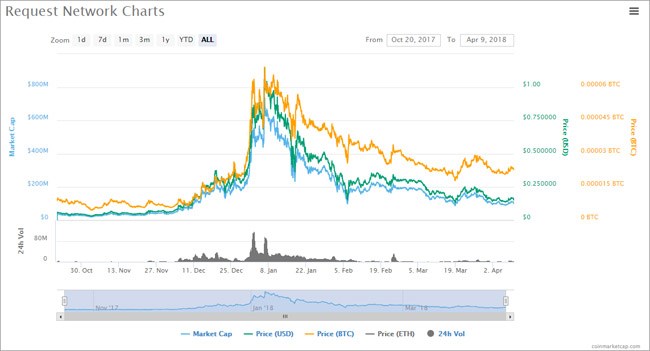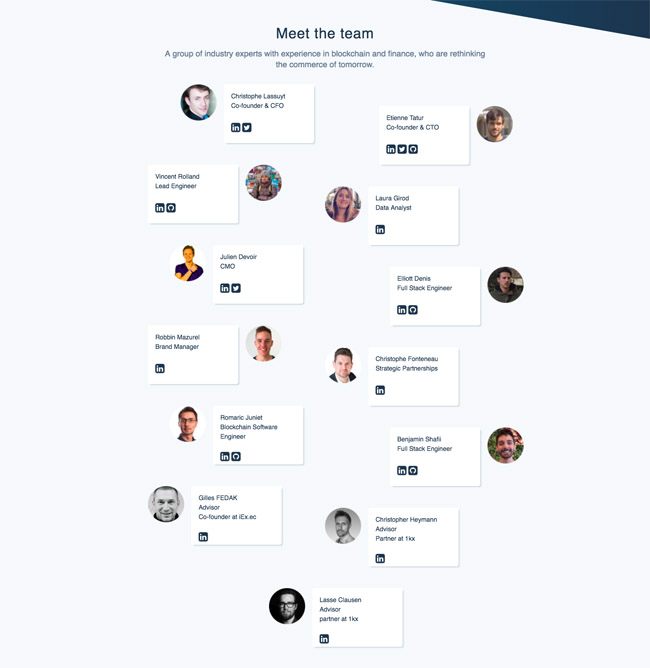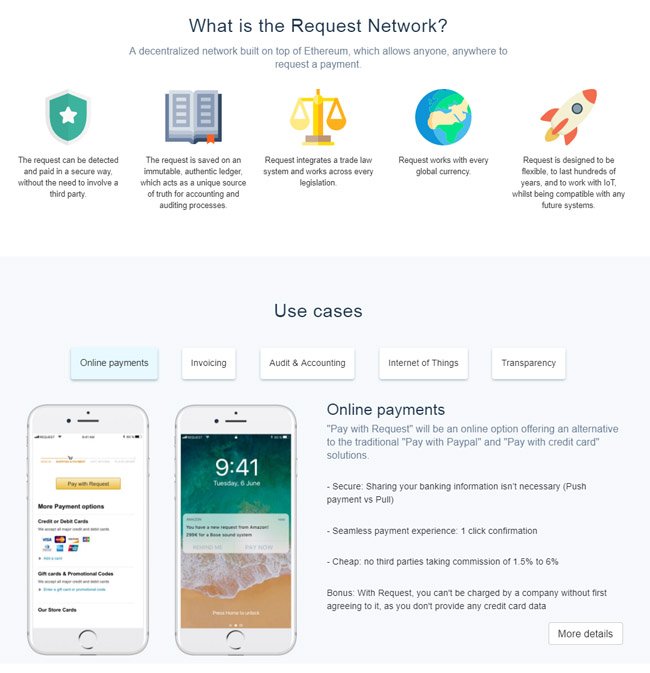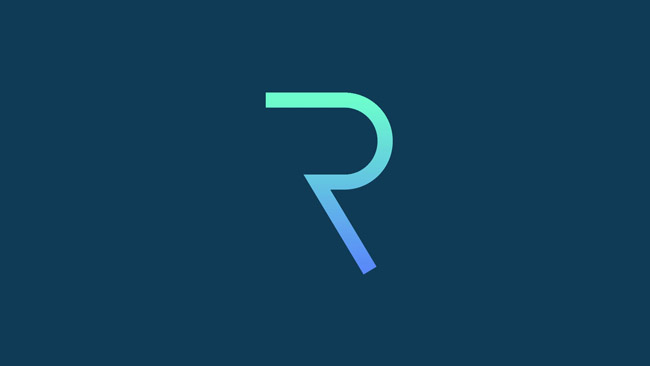The blockchain industry is growing at an exponential rate, mainly due to the security, transparency, and global access that the technology brings to the table.
Due to these benefits, while many use cases have been put forth for this sought after technology, its most apparent and primary utilization seems to relate to peer-to-peer transactions that make global payments easier than before.
However, it would not be incorrect to state that the current payment-based platforms leave a lot to be desired. The nuances relating to the sector also make it clear that there is a need for an effective solution for this segment.
These effective solutions can improve the quality of life for many across the world as the process of sending payments or transferring value is made simpler, secure and faster.
Yet, solutions that can help to bring change to the payments processing industry in the present while also designing for the future have significant potential. This potential can bring about much excitement from members of the cryptocurrency community.
As the cryptocurrency community is looking for projects that can not only bring about returns but also significant changes and improvements to justify valuations and excitement in the industry.
One such project that aims to achieve all of this and more by revolutionizing peer-to-peer payments in this manner is Request Network.
In this in-depth review, we are going to go through some of the most pertinent points about the network and then we’ll see if it has the resources to get where it needs to go.
Request Network Review: What is Request Network (REQ)?
Based on blockchain technology and built on the Ethereum platform, the Request Network is a decentralized payment solution. The blockchain based project focuses on providing multiple services through its eclectic set of functionalities.
Having Y Combinator as one of its early backers, the same company that funded successful ventures such as Coinbase and Airbnb, the Request Network went live on the Ethereum mainnet on March 30, 2018, and has been garnering gradual yet noticeable attention for itself.
The Request Network does not only allow peer-to-peer payment transactions but also enables potential users to make online payments on websites with the click of a button. Request network allows users to send and receive payments through the use of invoices.
With these functionalities, the users of the Request Network can accept peer-to-peer as well as online payments while being able to create and pay invoices in any currency. The Request Network platform also allows the users to have the ability to receive their payments directly in their related account with more privacy.
That’s right, users are able to transact with more privacy. They are able to transact without having to share their financial or bank account information with the sender of said payments. The decentralized design of Request Network minimizes the capture of financial and personal information by malicious parties. Providing more privacy, security and less chances for information caught in situations like the Equifax hack.
Do some of these processes sound somewhat familiar?
You would certainly not be off course if some aspects of this value proposition made you think of PayPal. It seems that one of the primary goals of the Request Network is to be adopted as an alternative to the colossus of the payment processing industry. The project also seems to be taking the right actions to improve further aspects of the process. Request Network just might be a Paypal 2.0 or even Paypal 3.0.
While going head to head against established entities such as PayPal, Visa and Stripe is not easy, the Request Network is confident in achieving its goals due to its different approach in providing these services.
Request Network vs. Other Popular Payment Platforms
As mentioned earlier, the Request Network is based on the quickly growing blockchain technology. This means that the functionalities that payment providers such as PayPal are looking into adopting in the future, are already an integral part of the Request Network.
The Request Network is also decentralized, which means that during a transaction, no one from the organization holds the payment or funds with them and they are directly transferred to and from the transacting parties.
In addition to that, the Request Network provides the record of these transactions through a transparent and comprehensive ledger that leaves little to no room to be tampered with. The security and immutability aspects of Request Network provides it with credibility as a verifiable source of payment confirmation.
However, once Ethereum implements zkSNARKS, which is a functionality to enable private transactions, businesses will be able to utilize it in order to keep their private transactions confidential.
But wait, when it comes to Request, there’s more.
In addition to these features, the Request Network also has its cross-border, multi-currency payment functionalities as well. If you’re thinking, woah that’s a mouthful, what exactly is cross-border, multi-currency payment functionalities?
Let me explain.
This is an integration where payments can be sent and received all over the world with the currencies getting exchanged right away. For instance, if someone in Canada sends a CAD invoice to be processed to someone who is based in France, then the payment that is processed in EUR can easily be changed to CAD.
This functionality of sending and receiving payments in one’s own choice of currencies makes the process more accessible to the end user. To take it one step further, Request Network ensures that the transactions performed through its network remain to be one of most economical offerings as compared to current popular payment providers – and even some popular networks in the blockchain industry.
However, providing payment solutions is not the only thing that Request Network aims to bring to the world.
Request Network Review: Additional Functionalities
The Request Network is seeking to push the boundaries even more by building on top of the payments infrastructure. They are planning on doing this through automating and simplifying auditing, accounting, taxation, and verification for personal, corporate and even government use.
The auditing and accounting services are self-explanatory, where the maintained ledgers for each account can provide a transparent trail for individual transactions performed. These services also facilitate functions for special accounts that are set up for specific funding, such as escrow or payroll.
Automated accounting and auditing aspects are what makes the Request Network, a Paypal 2.0 or even a Paypal 3.0. Why? Cost savings across the board in both time and money.
Accounting and auditing will be made much simpler and easier while also allowing for much less time spent on it by human personnel.
This savings in time translates towards savings in monetary resources. Contributing toward a rise in human capital being targeted at other problems in business.
The next key aspect the Request Network is the design for incorporating the Internet of Things (IoT) into the future utilization of its services.
The IoT is a bit more technical to explain.
The concept of IoT is simply, the idea that multiple devices such as computers, cell phones, and point-of-sale machines would be able to communicate with one another and process payments by themselves.
You may think of this as setting up standing instructions or auto debit in your conventional bank account. For example, if you’ve set up recurring payments with Discover or Mastercard, the money is withdrawn from your checking or savings account and sent to Discover automatically.
The key aspect is that payments are automatically deducted and sent to the respective parties.
In this same regard, IoT goes one step further.
These internet-connected devices will be able to connect to each other, communicate and collect payment for services rendered.
While the concept of auditing and accounting is clearly defined in the Request Network’s protocol, features such as the IoT will be available in the future.
Again, what does this mean from a society standpoint? A shift from the present types of work to other forms of work. Request is looking at where the world is today while designing for the world is going tomorrow.
Request Network Review: How does the Request Network Work?
The Request Network is distributed into three layers.
The Core layer is where the network’s most basic functions exist. This includes features such as sending and receiving payments as well as creating and executing simple invoices.
The Extensions layer is what adds more functionalities to the basic set of features. They can range from arranging escrow payments to disbursement of payroll or periodic rental payments to certain accounts.
The Applications layer is where developers on the Request Network can create supplemental applications. They can also include third-party applications which use Request Network’s payment functionalities.
This Applications layer will also maintain a reputation system to determine the profile of users on the network. Lastly, this layer resides off-chain, ensuring that it is not congesting the main functions of the network.
While the initial whitepaper left out details regarding the exact mechanism of how the Request Network could perform transactions in any currency all over the world, further updates have come to light since then.
The network would achieve the feat of being “currency agnostic” – which is its way of saying that it will accept all currencies as long as there is an authority that could prove the transactions.
The authorities or channels from where the payments are accepted will be called “Oracles”. While the project mentions that creating an Oracle for cryptocurrencies is easier because there is a digital and irrevocable record of transactions available, doing so is trickier when it comes to fiat.
As per the network, it is currently considering a few options for setting up these Oracles in order to ensure smooth operations with fiat.
The options range from creating a tokenized fiat currency that signifies the value of transacted fiat, to forging alliances with other payment processors such as MasterCard or Stripe.
Further details on the company’s plans to facilitate fiat based transactions can be found here.
This uncertainty on the deliverance of its core features perhaps remains as the biggest issue with Request Network’s readiness and availability.
Request Network has been communicative and action-oriented as it meets milestones and has recently launched.
Request Network Review: What is the Request Token (REQ) and what does it do?
The Request Token (REQ) is the network’s native token. Since it is an ERC20 token (which is an Ethereum token standard), it can be held by all the wallets that facilitate ERC20 tokens through their services.
The total supply of the REQ is 1,000,000,000 (1 billion), where 50 percent of these tokens were distributed through an initial coin offering in October 2017; 20 percent of the tokens were given to early investors, and 15 percent each were allocated towards external development and for the Request team and advisors.
In addition to paying transaction fees, the REQ token will be utilized to carry out certain functionalities on the platform depending upon the user and level of participation in the platform.
The token will also be used for governance purposes.
In regard to the transaction fee, the amount will reportedly be charged in terms of the REQ currency. The fee amount will be between 0.05 – 0.5% of the transaction value. Once the amount is paid in REQ after each successful transaction, the respective tokens will be burnt and the gradually decreasing supply will translate to higher value for the REQ tokens.
The REQ tokens have all been minted and the project is said to use a proof of stake consensus algorithm to implement future scaling solutions, at which point it would need specific tokens for security and consensus purposes.
Since REQ is a relatively new token, it does not have much of a history in terms of trading as compared to popular cryptocurrencies in the same segment, such as Stellar Lumens.
However, it is currently being traded through popular exchanges such as Binance and Kucoin.
The following chart shows the REQ token enjoying a spike in value during the December 2017 – January 2018 bullish run of cryptocurrencies, and getting affected afterward with the subsequent downward trend. But since the REQ token is new and the network has just been launched, the demonstration of its value proposition could result in positively affecting the REQ’s price in the future.

Statistics provided by CoinMarketCap
What about the Request Network Team and Future Updates?
The Request Network team was previously associated with another money transfer based project called Moneytis.
The team members also do hold notable experience which seems to be one of the reasons why the project made it to the main-net in such a short time.
The only issues that one sees when looking at Request Network are the market focus and continued relevance. The team has rather ambitious goals, the question for many is, will they be able to deliver on their long-term vision?
Yet, large red flags are not truly present in this regard. If one were to assess their milestone completions and communication to date, one would not be disappointed.
They have released their main product on time and have worked to gain significant partnerships.
The Request Network also has a foundation for its development, called the Request Network Foundation. The aim of this entity is to promote the use and adoption of the Request Network.
The Request Network had announced in January 2018 that it will allocate $30 million to a dedicated fund over the next 5 years – with the amount being funded by REQ and Ether (ETH).
The initiative, dubbed as the Request Fund, provides a non-exhaustive list of use cases for which applications will need to be developed on the Request Network in the next 5 years.

Applicants whose prototypes get selected can receive between $20,000 to $100,000 in REQ and ETH upon delivery of successful applications. This was announced to promote a sense of community participation in the decentralized network and also to ensure that the Request Network keeps growing as time passes.
The Request Network has also formed partnerships with existing decentralized exchange projects belonging to the blockchain industry, such as the Kyber Network and the 0x Project.
This shows that the project’s team is committed to its cause and the platform could see consistent updates in the future.
For now, the Request Network is working to launch payments, crowdfunding and accounting apps as the first set of applications for the platform.
Request Network Review: Competitors in the Industry
The Request Network’s biggest competitor is said to be OmiseGo, and the network knows and owns that comparison.
In a detailed analysis post published in September 2017, the Request Network clarified that the project is not a direct threat to OmiseGo, but it can actually complement the network’s operations.
Elaborating on this, the network defined that while it sees itself as PayPal 2.0 with the functionality of invoices, OmiseGo is different in the sense that it is going to facilitate payments between e-wallets like SWIFT does for conventional bank transfers.
If this analogy is true, then this means that Request has competition from other players such as non-blockchain based players (Paypal, Stripe, etc) and blockchain based players (Populous, Ten-X, Monetha, Paypie, and others).
The key value that the Request Network provides is the fact that it seeks to create a hub and is building out a system for a variety of use cases on the underlying core protocol. In addition to this, Request is taking action to make certain that is providing a safe, secure and cost-effective experience across the board.
Where most of competitors of Request Network seem to tackling specific pieces of the problem, the Request Network is focusing on the payments piece of the problem while building out a core protocol that can tackle a variety of issues. Request seems to be looking at the picture from a holistic standpoint while aiming to work with a larger community address further utilization and growth.
Lastly, Request is delivering, it has a product which can be used today.
Could the Request Network Prove to be Successful?
The concept that the Request Network provides and the use cases that it proposes to meet are things that are currently needed in the payment industry. This means that the fundamentals of the Request Network are correct, they can provide real value.
The project, as most in the cryptocurrency industry, needs time and patience to progress.
At the present moment, it continues to take action and meet milestones while having a significant differentiating aspect of a working product.
The lingering question might be, will it continue to build steam in important partnerships, growing a development ecosystem while finding a loyal and growing happy user base?
If the project can continue to gain partnerships with prominent players in the accounting space like PwC and potential partners like city halls and governments, they would be well on their way meeting their goals across the board.
To put it simply, if the Request Network could put its REQ where its mouth is and deliver on the disruptive solutions that it aims to achieve originally, it has immense potential. The team has the credibility, continues to take action and has the right backing from prominent connectors like Y Combinator to be able to penetrate more markets.
The team acts fast, and if they are able to continuously do so while working with the target market to refine and improve their product as necessary, then they have a chance to make it in a hyper competitive market.
If not, then it will just be added to a slew of other blockchain projects that “could have been”.




